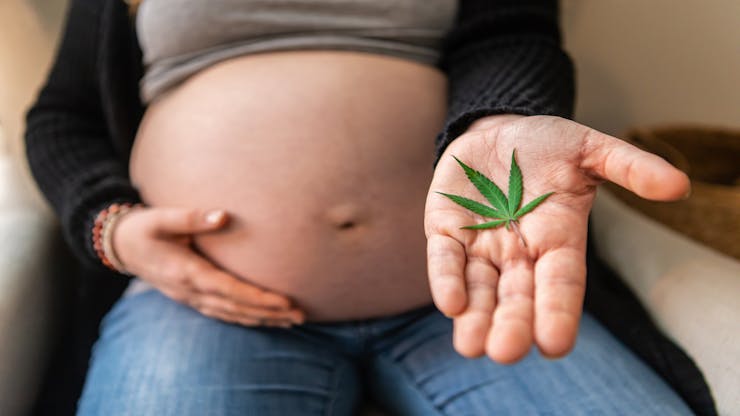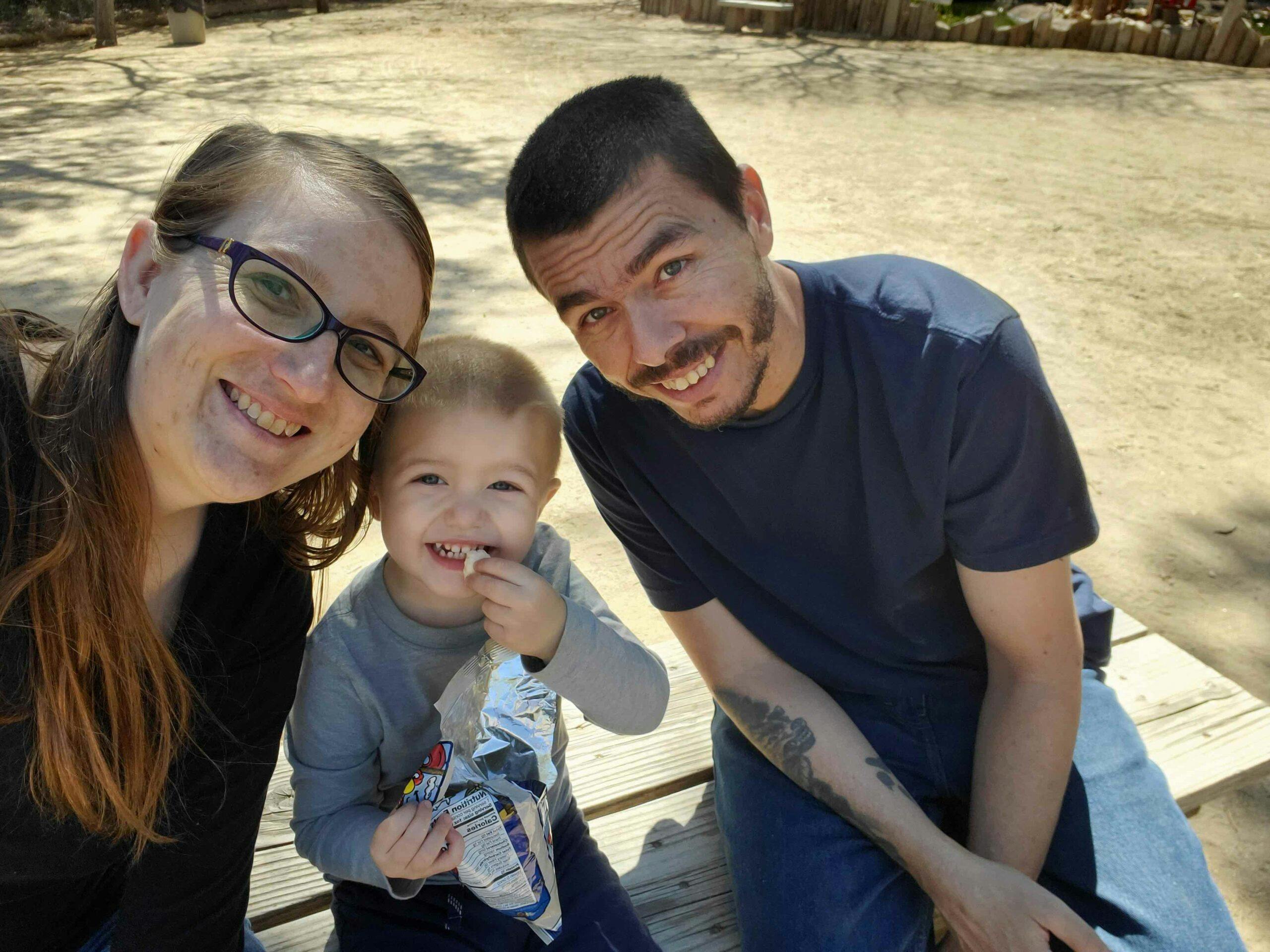“A lot of nuance” is required when weighing the risks and benefits of cannabis, says Dr. David Baranger.
As more and more states end cannabis prohibition, consumption rates among pregnant people are on the rise: Before the pandemic, roughly 7% of pregnant American women reported using cannabis, and that has only increased since. But the question remains: Is it safe?
National health organizations like the CDC and the American Academy of Pediatrics advise pregnant people not to use cannabis, but this advice is based on inconclusive data suggesting that cannabis maycause low birth weight, psychological disorders, and neurological issues that manifest later in life.
A new research letter published in JAMA Pediatrics by researchers at Washington University in St Louis. Missouri, suggests that prenatal cannabis exposure is “associated with persisting vulnerability to broad-spectrum psychopathology as children progress through early adolescence,” which “may lead to greater risk for psychiatric disorders and problematic substance use.” But it doesn’t prove cannabis use alone creates these problems.
Leafly spoke to the letter’s lead author Dr. David Baranger, a neuroscientist at the Department of Psychological and Brain Sciences at Washington University in St. Louis. Baranger’s research focuses on psychopathology and substance use disorders. He spoke with us about the current study, and about the challenges of scientific research involving cannabis.
“Cannabis, even though it’s a plant, is not benign. It’s not a zero-risk substance for the child,” he told Leafly in a Zoom interview this week. “We think that there’s a hint that cannabis may have some negative consequences for a person’s offspring. It isn’t an enormous effect, even if it were causal…At this point, we can’t say cannabis is definitely better or worse than anything else.”
The data comes from an ongoing 10-year study

The letter’s conclusions are based on a review of data from the Adolescent Brain Cognitive Development (ABCD) study, the country’s largest long-term study of adolescent brain development to date. The ABCD study, conceived in 2013 and launched in Sept. 2015, is a decade-long study tracking behavior and brain development in approximately 12,000 children in the United States. Data is being collected via a mixture of questionnaires, interviews, games, genetic testing, and MRIs.
Supported by organizations that include the National Institute on Drug Abuse and the National Institute on Alcohol Abuse and Alcoholism, the ABCD study seeks to gauge how changing biology in nine- and 10-year-olds interacts with childhood activities, including “sports, video games, social media, unhealthy sleep patterns, and smoking,” as they age. The study includes questions about cannabis but is not exclusively focused on cannabis use.
Members of the Washington University research team analyzed the data retrieved via questionnaires with parents about their cannabis use during pregnancy; they did not conduct interviews or tests with subjects themselves. The ongoing study offers some of the best data for researchers in a field that, as Baranger told Leafly, has been in “a crisis for the past decade.”
“Prior work in the prenatal cannabis world has had to depend on relatively small samples: ten, thirty, maybe one hundred participants,” said Baranger. “And that makes it hard to draw conclusions. We’ve realized that the questions we are really interested in require enormous samples to answer,” he continued. “You need hundreds, if not thousands, or hundreds of thousands of people to answer those questions.”
Baranger and his co-authors organized individual participants into three groups: those who reported cannabis use only before they knew they were pregnant, those who used cannabis before and after maternal knowledge of pregnancy, and those who reported not using any cannabis during pregnancy.
They then used longitudinal assessments from the first two years of data, between June 2016 and October 2018, as well as annual follow-ups in 2019 and 2020.
Of the more than 10,000 individuals studied, only around 600 had reported using cannabis either before or before-and-after they learned they were pregnant. And the questions weren’t necessarily designed to get the information Baranger and his team are after. Controls were made for genetic and other substance covariates, such as parental use of alcohol and tobacco.
“We did try to control for everything that we had available to us that might be an index of preexisting risks, like family history, and parental use, and whether the child themselves used any drugs up to that point. We control for genetic risk for mental health disorders, including cannabis use disorder. This study is a first attempt at trying to unpack it with a big sample, but there’s a lot more work to be done.”
Cannabis research pitfalls
“The new and changing legal aspect of cannabis has made it possible to find funding for studies where you’re recruiting people who use cannabis.”
Dr. David Baranger, neuroscientist at Washington University
Because cannabis is federally illegal, its use cannot really be studied in real time. Rather, this data relies on self-reporting from parents, and after-the-fact correlations, which are not necessarily causational. The letter states that the research team’s findings may be skewed based on “small sample of prenatal cannabis-exposed offspring, potential underreporting of use during pregnancy, imprecise data on the timing/frequency/potency of cannabis exposure, and the lack of data on some potential confounders.”
“You have a questionnaire that is asking people about their drug use when they’re pregnant. And it was ‘were you using a drug, including cannabis’—and cannabis was a sub-question—‘when you learned you were pregnant?’ Then ‘upon learning you are pregnant, did you or did you not stop using those drugs?’ That’s our measure of cannabis use,” says Baranger, “which is super imperfect. Are they going to remember how much cannabis they were using? Maybe? Maybe not. And they didn’t really ask that question.”
Baranger told Leafly he personally supports cannabis legalization, and that “we need a ton more research on this topic” before making definitive statements. But getting cannabis-related research funded, let alone peer-reviewed, remains highly challenging. The dearth of research on prenatal cannabis exposure can be attributed, in part, to federal bureaucracy and a flawed system for determining which studies get accepted into credible scientific journals.
Other authors for the study have acquired funding for future long-term studies aimed at researching pregnant cannabis users and their children’s development, but those will likely take years to get started.
Creating a study that requires recruiting pregnant people, Baranger told Leafly, takes a really long time and requires negotiating through an extraordinary amount of bureaucracy.
While some may find the paper’s findings unsettling, Baranger said that many FDA-approved substances recommended to pregnant people carry their own risks, and parents should feel empowered to decide for themselves. Advising against cannabis use comes from a place of harm reduction and minimizing risk, at least for him.
“There’s a risk there, and you have to weigh that benefit,” he said. “I think some of the concerns about drug use are overblown. And I think a lot of nuance is required in order to unpack them. That should be taken into account when you’re making your decision for what’s the best for you and your child.”








